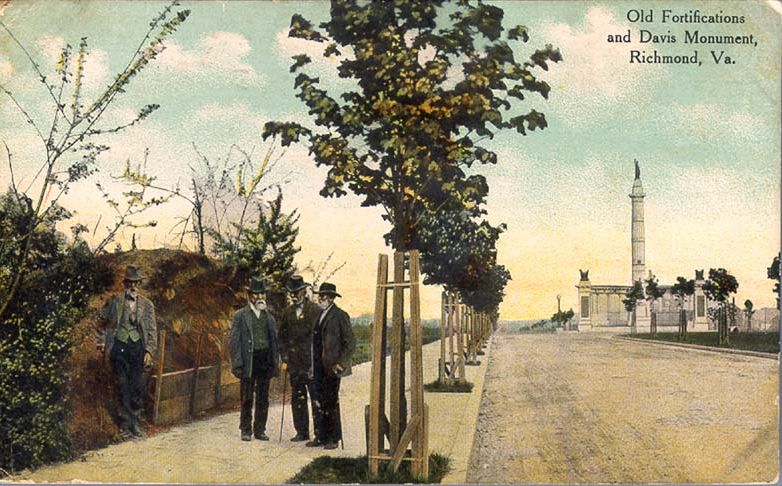
in 1910, a remnant of the original inner defense line's earth works was still visible next to the monument honoring Jefferson Davis
Source: Virginia Commonwealth University (VCU), Old Fortifications and Davis Monument, Richmond, Va.

in 1910, a remnant of the original inner defense line's earth works was still visible next to the monument honoring Jefferson Davis
Source: Virginia Commonwealth University (VCU), Old Fortifications and Davis Monument, Richmond, Va.
The Jefferson Davis statue in Richmond is at the intersection of Monument Avenue and what is now Davis Avenue. The Monument Avenue Commission circulated background material on it for a public forum in August, 2017:1
Date Conceived: December 21, 1889 (10 days after his death)
Date Erected: June 3, 1907
Location: Proposed: Monroe Park, then Broad Street. Final: Intersection of Monument Avenue and Cedar Avenue (later renamed Davis Ave.) at the site of the CW Star Fort.
Sculptor: Statue: Edward V. Valentine; monument design by architect William C. Noland
Organizers: In 1889 The Jefferson Davis Monument Association was created to build a monument and to make plans to have Davis's body reburied in Richmond. City Mayor J. Taylor Ellyson presided over the Association. The monument also was backed by the United Confederate Veterans and the Chamber of Commerce. The group sought $250,000 from former confederates across the south and their descendants. Varina Davis chose Monroe Park as a location and a competition was announced in 1896. The cornerstone for a temple-form design by Percy Griffen of New York was laid in Monroe Park, but the plan was abandoned due to insufficient funds. Around 1902, the United Daughters of the Confederacy (UDC) took up the cause, raising additional funds to add to the $42,000 left from the original association. Louis Gudebrod won another competition in 1902 but his design for a triumphal arch at Broad and 12th Street was disliked by Mrs. Davis; when fundraising issues continued, he quit. The next year the UDC went to Edward V. Valentine and William C. Noland, a Richmond sculptor and young architect respectively, and asked them to design a statue within the existing budget. In 1904 the UDC requested a site on Monument Avenue from city council following announcement of the site for Stuart. The council gave the UDC a site four blocks to the west on Cedar Steet (now Davis Avenue).
Description: The monument's design has a central 60' granite column topped by a female figure cast in bronze; an eight-foot tall bronze statue of Jefferson Davis with his right arm outstretched and his left hand resting on an open book; and a semi-circular exedra with a colonnade of thirteen doric columns. The literature created for the statue dedication in 1907 reads "Symbolized in the Vindicatrix, which crowns the shaft of the monument . . . the emblem of Southern womanhood fitly stands, the immortal spirit of her land, shining unquenched within her eyes, and her hand uplifted in an eternal appeal to the God of justice and truth." Below her are the words DEO VINDICI (by God the protector.) Also on the column are inscriptions reading PRO JURE CIVITATUM (for the rights of states) and PRO ARIS ET FOCIS (for heart and home.) The bottom of the column above Davis's head contains the seal of the Confederacy and the words JEFFERSON DAVIS PRESIDENT OF THE CONFEDERATE STATES OF AMERICA 1861-1865. Davis's pedestal contains the wording JEFFERSON DAVIS / EXPONENT OF / CONSTITUTIONAL PRINCIPLES / DEFENDER OF / THE RIGHTS OF STATES followed by a latin quote from Horace: CRESCIT OCCULTO VELUT / ARBOR AEVO FAMA meaning "The fame from a remote age grows like a tree." The colonnade includes thirteen doric columns decorated with the stars and bars of the Confederate military. The columns represent the eleven seceding states and the two which sent delegates to the Confederate Congress but did not secede (Missouri and Kentucky).
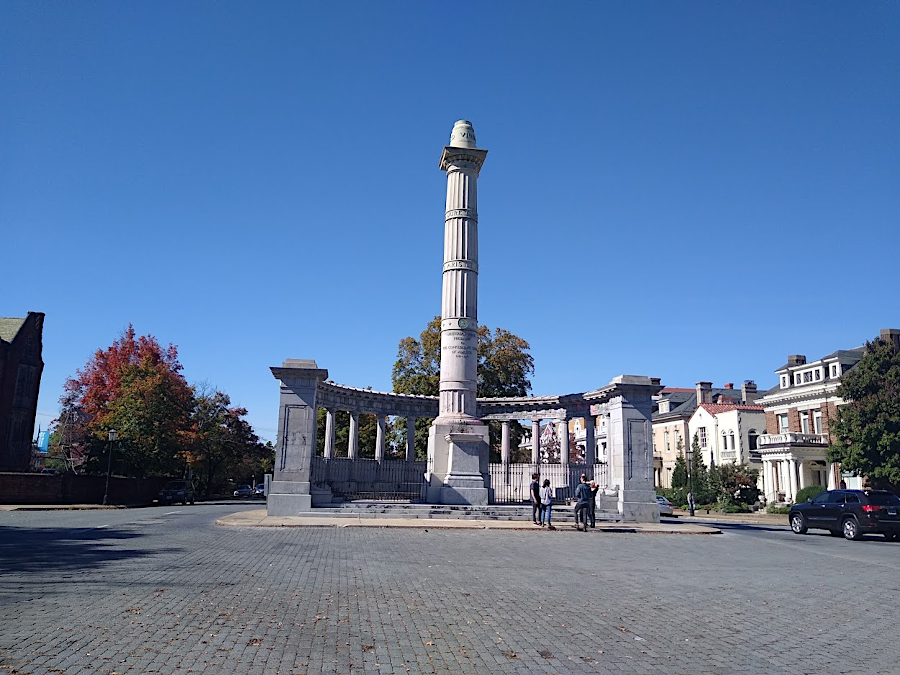
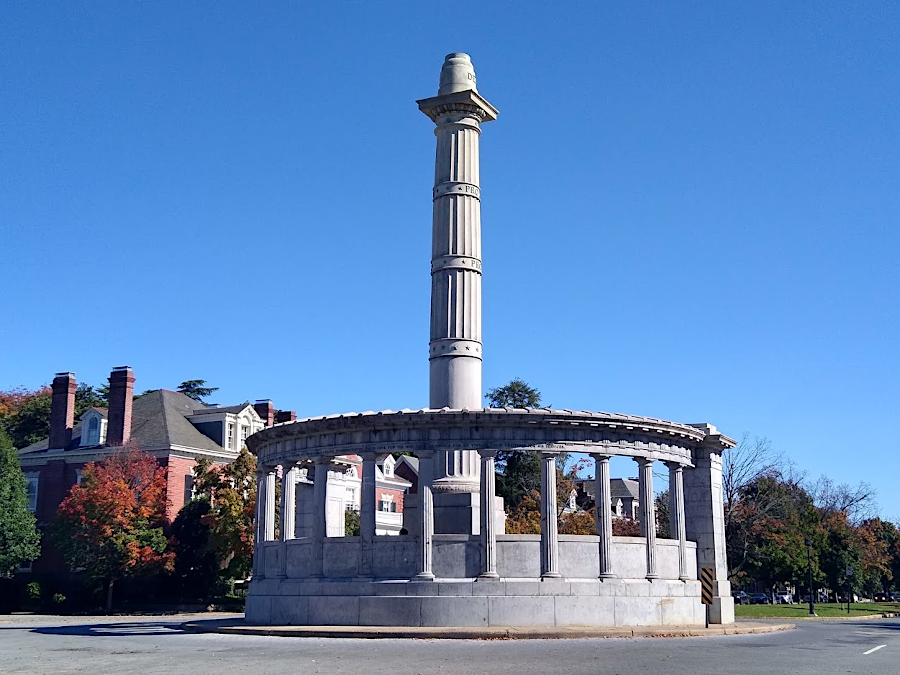
the remnants of the Jefferson Davis monument in October, 2020
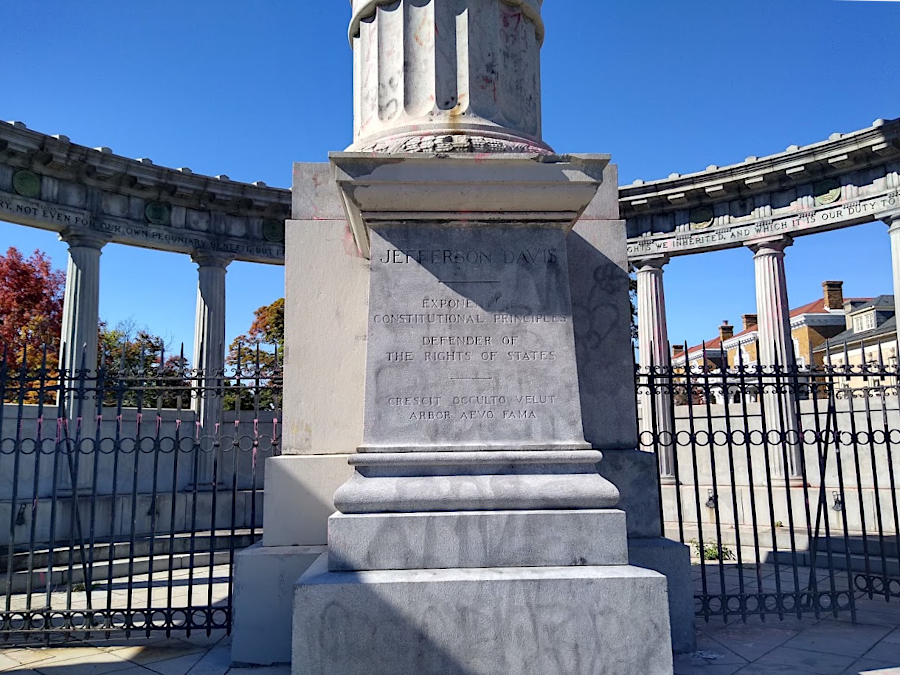
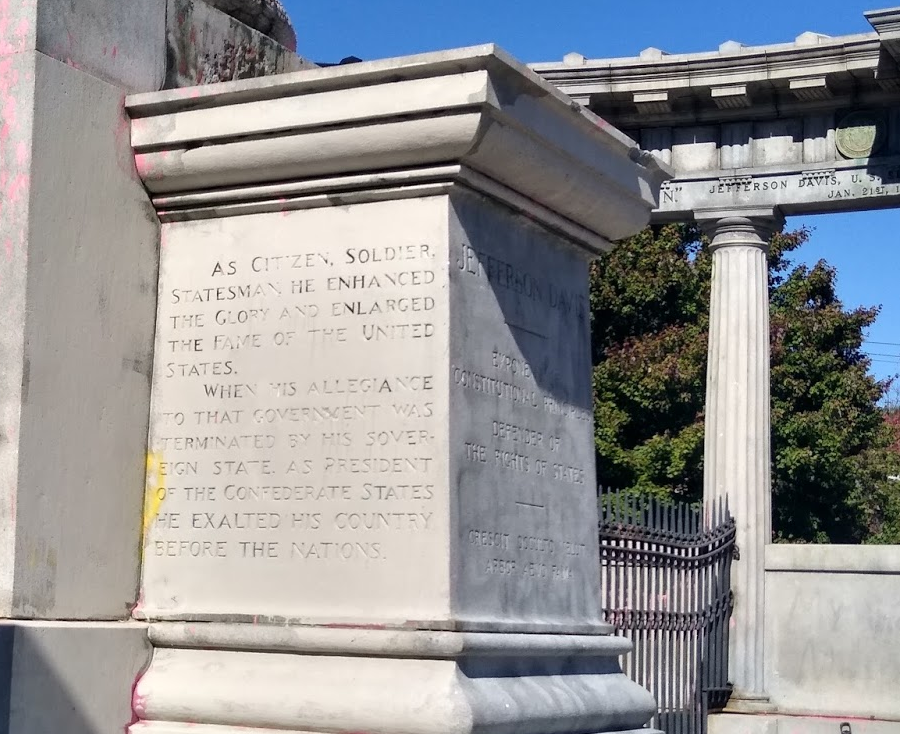
the Jefferson Davis monument claimed he "exalted his country before the nations"